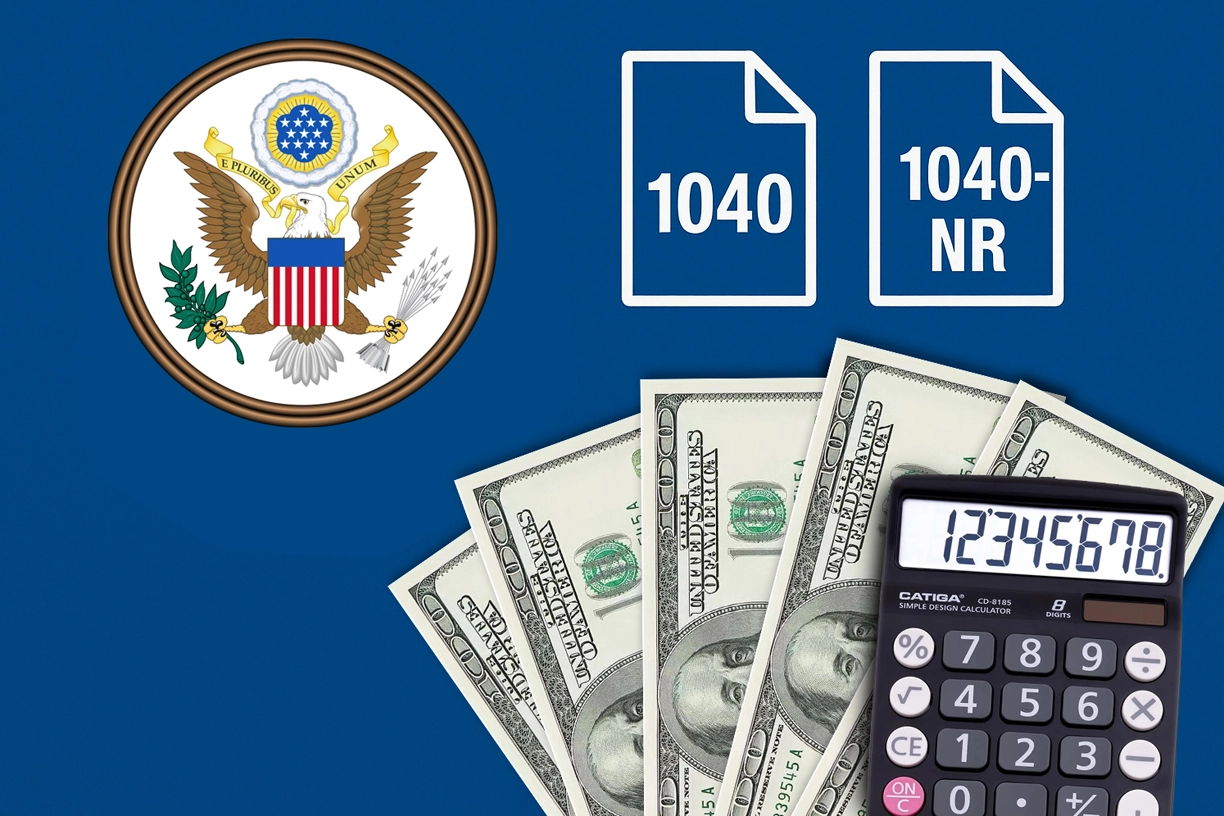Guide to US Individual Tax Filing: 2025 Latest Procedures and Important Notes

The annual US individual tax filing season can be a daunting experience for many, whether you are a newcomer to the United States or a long-term resident.Navigating the complex tax regulations, various IRS forms, and understanding how to determine your tax filing status can be confusing. Which incomes need to be reported? What deductions can you claim? Mistakes can easily lead to penalties and fines from the IRS. This comprehensive guide will walk you through the entire US personal tax filing process, helping you avoid IRS penalties and potentially save a significant amount on your taxes.
Step 1: Determine Your Tax Residency Status for US Individual Tax Filing
There are three common tax residency statuses recognized by the IRS: Resident Alien (RA),Nonresident Alien (NRA),and Dual-Status Alien. How can you accurately determine your tax residency status?
Many people mistakenly believe that simply living in the US means they are a tax resident, and if they are outside the US ,they are a nonresident. Then they pick forms based on that assumption, filing Form 1040 if resident or Form 1040-NR if nonresident, and consider the filing done. This misunderstanding often leads to IRS notices of heavy fines. Even those using online tax software like TurboTax can fall into this trap and be shocked when the IRS calls.
How to correctly determine your tax residency status?
If you hold a US Green Card or meet the Substantial Presence Test based on your days of physical presence in the US over the last three years, you qualify as a Resident Alien (RA) for tax purposes and should file Form 1040.The Substantial Presence Test is calculated as follows:
You are considered a US tax resident if you were physically present in the US for at least 183 days in the current year,or if the weighted sum of days in the last three years meets the threshold:
Current year days×100%+Previous year days×13+Two years ago days×16≥183
Current year days×100%+Previous year days×31+Two years ago days×61≥183
Resident Aliens must report worldwide income on their US tax returns. This includes wages,self-employment income,investment interest, foreign bank interest, dividends from overseas companies,capital gains, and other income.The difference between Resident Alien (RA) and Nonresident Alien (NRA) tax filing:
Resident Aliens report Worldwide Income using Form 1040 or Form 1040-SR (for seniors), and may need to attach schedules like Schedule C for self-employment income, Schedule D for capital gains, etc.
Nonresident Aliens only report US sourced income using Form 1040-NR. This generally includes US based wages, dividends, certain interests, rental income from US properties, and capital gains from US assets.
Types of Income to Report in US Individual Tax Filing;For Resident Aliens (RA):Wages and Salaries: Income from work performed both in the US and overseas.
Investment Income: Interest, dividends, and capital gains from any country;Rental Income: Earnings from renting properties inside and outside the US;Self-Employment and Business Income: Income from freelance, online business, or other operations globally.Pensions and Retirement Income: Including US Social Security and foreign pensions;Other Income: Bonuses, inheritances, gifts, and taxable foreign income.
For Nonresident Aliens (NRA):US Sourced Wages and Services Income: Temporary or contract work in the US;US Source Investment Income: Dividends from US companies, US bank interest (often exempt),rental income from US properties.Capital Gains: Usually only on US asset sales, with some exemptions.Other US -Source Income: Royalties, patents, gambling winnings, etc.
Step 2: Deductions and Tax Credits Available
Resident Aliens can claim the Standard Deduction and various Tax Credits such as the Child Tax Credit and education credits, effectively reducing their taxable income.Nonresident Aliens usually cannot claim the standard deduction unless from a country with a tax treaty. They are limited to itemized deductions and have fewer tax credits available, often resulting in a higher effective tax burden.
Step 3: Important Deadlines for US Individual Tax Filing
January 31: Employers and financial institutions must send out W-2 and 1099 forms to taxpayers.
April 15: Regular tax filing deadline for the previous tax year (e.g., 2025 filing covers income from Jan 1 to Dec 31, 2024). If the date falls on a weekend or holiday, it extends to the next business day.
October 15: Extended filing deadline if the taxpayer filed Form 4868 for extension. Note: extension applies only to filing, not payment.
Late filing risks:Late Filing Penalty: 5% of unpaid tax per month, max 25%;
Interest on Unpaid Tax: Accrued daily on unpaid amounts.Delayed Refund: Filing late may delay any tax refund.
Step 4: Complexity and Compliance for US Individual Tax Filing
Resident Aliens have more complex filing requirements, including worldwide income reporting, and must comply with foreign bank account reporting like FBAR and FATCA.
Nonresident Aliens focus only on US source income, with simpler compliance requirements.
Why Choose Shenzhen Guansai Technology Co., Ltd for Your US Individual Tax Filing?
As a professional company specializing in US individual tax filing, ITIN applications, and corporate tax services, Shenzhen Guansai Technology Co., Ltd offers:
Expert Accuracy: Deep understanding of US tax law and IRS updates ensures compliance.
Full-Service Support: From document preparation, form completion, submission, to follow-up tax assistance. Free expedited and extension services available.
Customized Solutions: Tailored tax strategies maximizing your tax benefits.
Efficient & Convenient: Electronic filing and online communication save time and provide quick responses.
If you are unfamiliar with the US individual tax filing process or need help with ITIN applications and nonresident tax returns, feel free to contact our professional team for free consultation and personalized plans.


+8618038173631


hi@easytaxs.com


StartBizUSA

Please scan WeChat QR code for professional service
STAY IN THE LOOP
Subscribe to our free newsletter.
Many overseas Chinese who live, work, or invest in the United States often face a challenging problem: the same income may be taxed both in China and in the US,a situation known as double taxation. Without understanding the relevant tax policies, individuals may not only face higher financial burdens but also risk IRS penalties due





